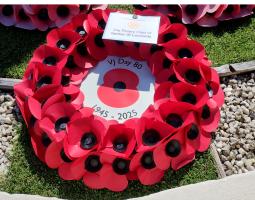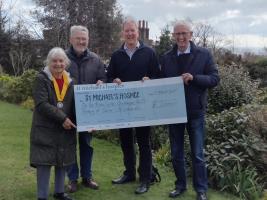Emily Wilding Davison and the Bexhill Connections
Wed, Aug 24th 2022 at 7:00 pm - 9:00 pm
by David Hatherall
The after-dinner speaker on 24th August 2022 was David Hatherall of Bexhill museum who spoke about the life of suffragette Emily Wilding Davison and her connections with Bexhill.
Emily was born in London in 1872 the daughter of a rich merchant’s second marriage; it was a large family and Emily had 8 half siblings and three siblings. She was well educated from a young age and went to St Hugh’s College in Oxford for English Language and Literature. She earned a First Class (Honours) award in 1895 but was not given it as Oxford did not grant degrees to women at that time. After her exams Emily went to work as a governess and as a teacher. By increments, she became radicalized to the cause of women’s suffrage. In 1906 she joined the Women’s Social and Political Union (WSPU), which had been founded in 1903 by the noted mother and daughter suffragettes Emmeline and Christabel Pankhurst. Some three years later, when Emily was also involved with adult education and the Workers’ Educational Association, she had stopped teaching day school full-time to turn her attention to the cause of women’s suffrage, about which she had grown passionate. After the return to power of the Liberal Party in 1906, the succeeding years saw the defeat of seven suffrage bills in Parliament. As a consequence, many suffragists became involved in increasingly violent actions as time went on.
Emily became more involved with the struggle; she marched, rallied, threw stones, and even snuck into the ventilation shaft at the House of Commons over a weekend with the intent to make a speech. She was arrested nine times and force-fed 49 times while hunger striking during her incarceration. She believed the “cause” needed a martyr and several times threw herself down the stairs whilst in prison.
The culmination of her activities was on Derby Day, 4thJune 1913; she ran onto the course as the horses were galloping down and was hit by Anmer, King George V’s horse. She died in hospital 4 days later and thousands attended her funeral. Speculation continues as to whether it was deliberate or an accident; opinion is much divided.
David, the speaker, has done considerable research into Emily’s connections with Bexhill. Apart from her setting fire to two pillar boxes in Bexhill, connections are through her family. Her half-brother Henry Jocelyn Davison, a Royal naval captain, moved to Bexhill after he retired, and his children emigrated to Australia. Likewise, another half sibling, William Seton Davison moved to Bexhill from Sheffield where he worked as a kitchen porter; one of William’s children also emigrated to Australia but some remained in Bexhill and are now buried in Bexhill cemetery. David recalled that he had spoken to Little Common Probus and a solicitor told him a story about a lady who came to make a will and deposit a package in their strong room only to be opened after her death and then auctioned. The package was a suffragette sash with signs of blood on it; the lady’s father was clerk of the course on the day Emily died and was one of the first to try to help her, it would appear the sash found its way into her father’s possession. It later sold a Southerby’s for a near 5-figure some around 25 years ago!
Rotarian Chris Foley thanked David on behalf of the club.
With acknowledgement to The History Press and Britannica from which some of the text was copied.
'What We Do' Main Pages:
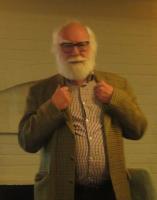
Speaker Keith Leech gave a fascinating and informative talk on the history of the bonfire and the Gunpowder Plot
more.jpg)
The Wendy Cocker Award for Endeavour for 2025 awarded to Chloe Considine of Sidley Cricket Club.
more.jpg)
Presentations to benificiaries of the 2025 Car Show Warming Up the Homeless, Rye and District Community Transport and the Senlac St Leonards’ Yellowmen.
more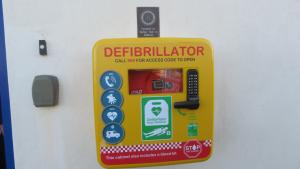
The vandalised defibrillator cabinet at Galley Hill, Bexhill, has been replaced by The Rotary Club of Senlac St Leonards ...
more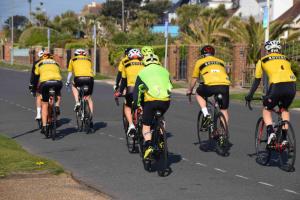
The annual “On-Yer Bike” Castle Challenge, organised by the Rotary Club of Senlac St Leonards, took place on Sunday, 27th April with routes to Pevensey, Magham Down and Beachy Head. Here are some of the photos of the day....
more
Are you a charity or organisation that has an ongoing or potential project to help improve the community and the environment?
moreChartered in 1985, we operate within the Hastings and Rother District of East Sussex, England
more
The Rotary Foundation is the Rotary Charity providing a range of Grants for projects aligning with Rotary's Areas of Focus as well as coordinating our flagship project the eradication of Polio from the World.
more


